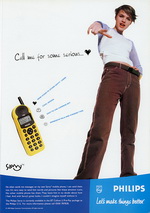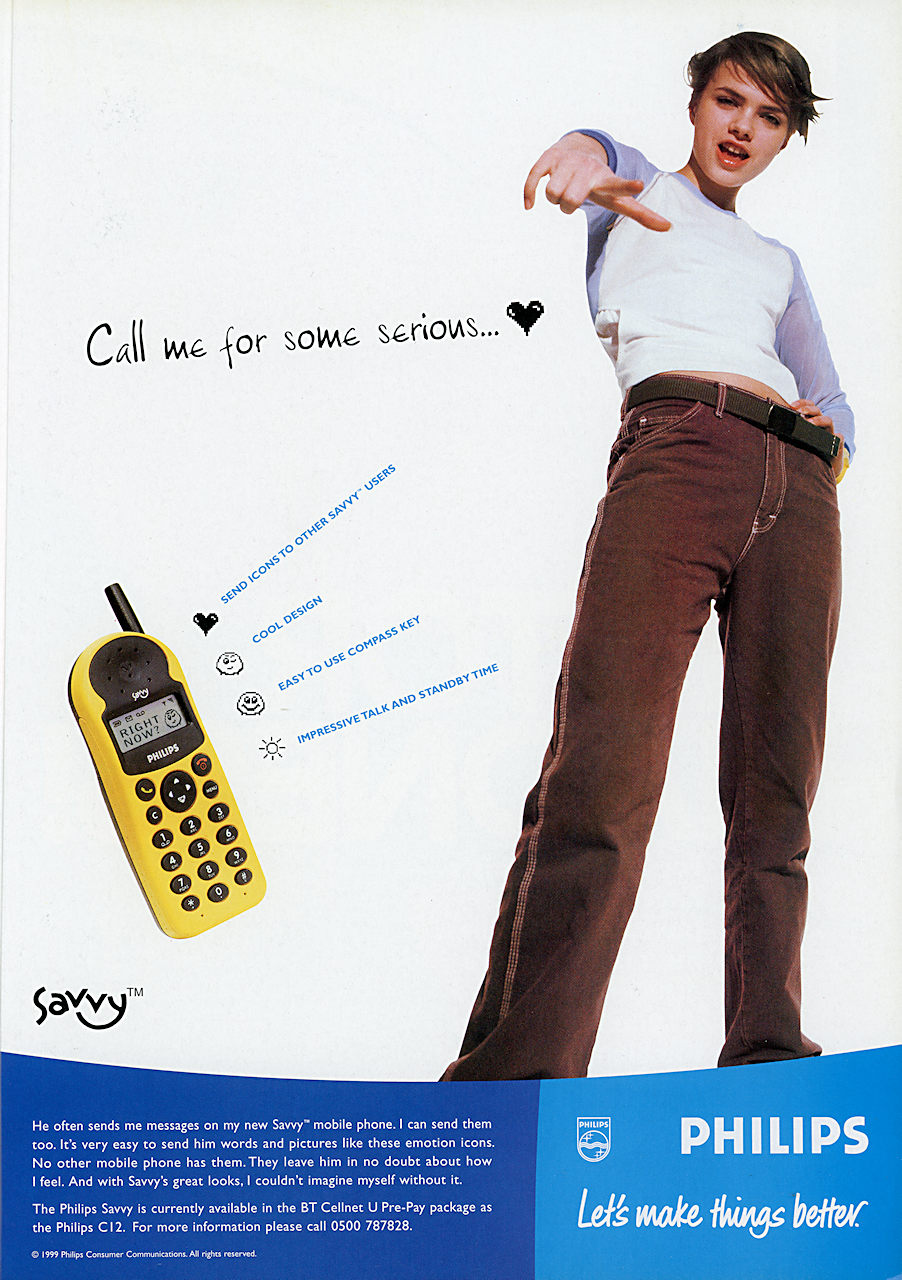Software Reviews
Cowon J3 PMP
Reviewed by Laurence Fenn
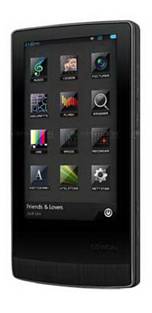
I've been into music for a long time, and I've gone through many different players to listen to my favourite tunes. I started with a cassette player, then a portable CD player, then a mini Disc player and finally an MP3 player (Samsung Y9). The latter was great but had only a 4GB capacity, so I was always removing files to make room for new music. It was good though, small and easy to use although the screen was quite small and not worth playing videos on (which had to be in a proprietary format). I recently decided to treat myself to a new player and went for the Cowon J3 after seeing it recommended by several web sites. Based in Korea, Cowon have made MP3 players for quite a while, and the S9 was their best until the J3 came along to replace it.
It's very thin (9.9mm), and comes in black or white with a variety of memory sizes from 8GB up to 32GB. It weighs around 74g although the study leather case I bought does add a bit to that. I went for a 16GB black one, and as it has a miniSD slot, a 16GB card. Files are shown in the library no matter where they are stored, whether in the internal memory or the microSD card, so your files are easy to find. It can player MP3, WMA, OGG, FLAC, APE and WAV files with a variety of equaliser settings (four user defined ones) and has a built FM radio (using the headphones as an aerial). It can also display photos on its 272x480 pixel screen, and supports the pinch and stretch method for zooming in on its touch screen. It can also play videos in WMV 7/8/9, DivX 2/4/5, Xvid SP/ASP formats without any slow down. An optical TV out cable lets you plug the player into a television to watch video, but not high definition as the output is through a composite cable. It also supports subtitles in the SMI format for videos.
There's a power button on the left side of the device and on the right is an up and down volume control, play/pause button and prev/next track buttons. Underneath are the headphone socket and the microSD slot and USB socket, both of which are protected with a small plastic cover. This is quite flimsy and could snap off if you are too rough with it. On the back are the integrated speaker, microphone and a reset hole. The internal speaker is weak, but with the bundled headphones or your own plugged in it sounds great and the equaliser settings can add extra oomph to the sound.
The device charges when plugged into the PC via the USB cable (white) and takes about three hours for a full charge the first time. The battery lasts for around 11 hours playing video, or 55 hours playing music but I haven't tested that myself. You can't use the device when it's plugged in, which is a bit annoying and the clock does not update when it is in this docked 'charging' state, so you have to reset the time every time you unplug the device. This will hopefully be fixed in a firmware update, which is easy to apply. I noted there was an update before I started to use the device, so I downloaded the firmware update, unpacked the files in the root of the device's file system and it updated when it was switched on.
There's also an accelerometer built in which adds to the games so you can tilt to control the action or you can shake the device to skip a track when listening to music. It's mainly used to change the display when playing videos or music but it can be used in games. Apart from the one game (Hunter) built in to the device, you can load any Flash 7 games and they play quite well. Any Flash content is shown sideways and shrunk to fill the screen, so you may get black bars on the sides. There's no internet access so you can't play online, and you can exit the game by pressing the play/pause button on the side.
When you switch on the device it checks the internal memory, shown by a blue progress bar and if you have a MicroSD card inserted, it checks that too with a grey progress bar. If you have added a number of music files then it will also check the album art before displaying a menu. There are three types of menu, an icon base one, a text only type and a widget based one where you can customise the screen. You can also set a wallpaper (from the Pictures menu) which shows behind any of the main menus, but not the programs.
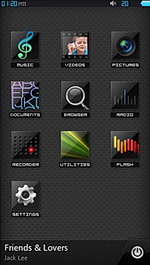
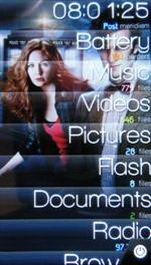
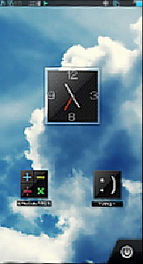
As with any touch screen, the 3.3-inch 16m colour AMOLED touchscreen does get covered in finger prints. You can buy a clear screen to protect the screen for a couple of pounds and a mains charge if you don't have access to a PC. A nice leather case is also available in black or white or you can go for a full plastic protective case. The TV out cable does not come as standard and there is no TV tuner, unlike the original Korean model, which can also record TV programs. When you use the cable, which plugs into the USB socket, you can set the TV out from the Video menu. This switches off the display on the device, leaving the buttons to skip through the clips, change the output ratio or return to using the built in screen (and switching off the TV out). The quality is not that good compared to playing the file through a dedicated media player, like my IcyBox hard drive.
The FM radio can scan for all available stations but does not display the station name. However you can edit the text file stored on the device to add the names once you have scanned for stations. The application for the radio has a nice round dial and like my previous mp3 player uses the headphones as an aerial.
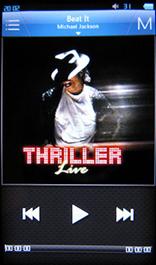
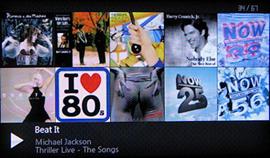
The Music player can display album cover art embedded in mp3 files and display subtitles for songs, although it's not as good as using a proper lyric program like miniLyrics which adds a scrolling window to WinAmp or any media player on your PC. Turn the device sideways and the music player shows the Matrix Browser where you can select an album from the cover and play tracks. There are many options for playback, such as shuffle, play all albums or play just this album. You can select your music by artist, album or genre as well as by year and how recently they were added to the device.
Additional programs on the device included a calculator, a document viewer (for text files only), typist (a notepad like program), Hunter (a Flash game which you control by moving the device), and a stopwatch. You can also set a timer to use as an alarm or to switch off the device.
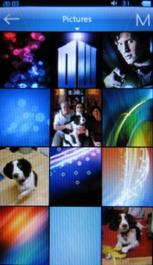

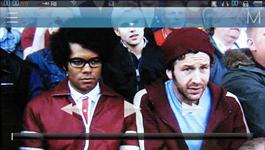
Playing videos gives you many options such as stretching the viewing frame to fill the screen or zooming in (if your video is full screen with black bars). A thumbnail view of the videos in the device shows six files per page, and it can take a while to build the database if you have many files. I used to have to recode videos to play on my Pocket PC and keep the audio to mono so the video can play, but the J3 plays full stereo sound and large frame sized files without a problem. The AMOLED display gives a really great picture in any lighting condition and you can book mark a file at a certain point, although the device always picks up from the last part point you reached anyway.
If you have a good knowledge of flash programming you can create your own menu and simply drop the file into the appropriate folder on the device. Not only can you change the main menu, but the way it browses for files, plays video, plays music, shows pictures, in fact any of the functions. Just by putting the right named file on the device means it will use that instead of the built one. There are a couple of forums with many UIs (User Interfaces) for the S9, which has the same screen size and most work on the J3.
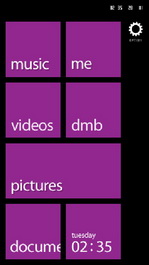
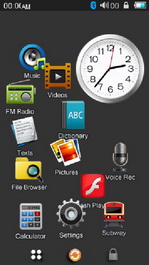
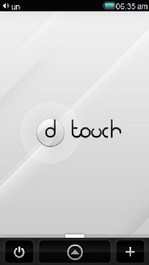
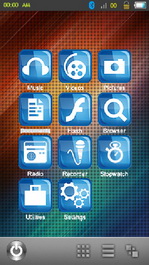
One of the only faults I could find with the J3 is the manual. It doesn't give much information and the interface for the device takes a bit of getting used to. There is little in the way of text messages, but I supposed that could be to make it easier to sell the player around the world. After a bit of searching I did find a guide by Cowon on how to make your own menus, and it included some example files to download. Many of the web forums I visited have information and customisations for the S9, the J3's predecessor but I'm sure more information will become available for the J3 over time. Some of the UIs designed for the S9 will not work on the J3, but you can simple connect to your PC and delete the SWF file.
Adding the MicroSD slot means you can expanded the capacity of the device, and buy a cheaper model with less built on memory. The 8GB model costs around £160 and the 32GB is nearly £240. Overall I am very happy with the J3. The touch screen can be locked so you don't accidentally jump a track by touching it, but if you keep the player in the leather case that won't happen. It's a shame there is no PDF reader, and the Flash 7 player limits the games you can play. Primarily it's a media player and it plays mp3 and DivX files (to two most popular formats) without a hitch. Some early reviews mistakenly said it had WiFi capability but if I wanted to use the internet I could use my mobile phone, or laptop. As a media player it does its job and it does it well.
Back
